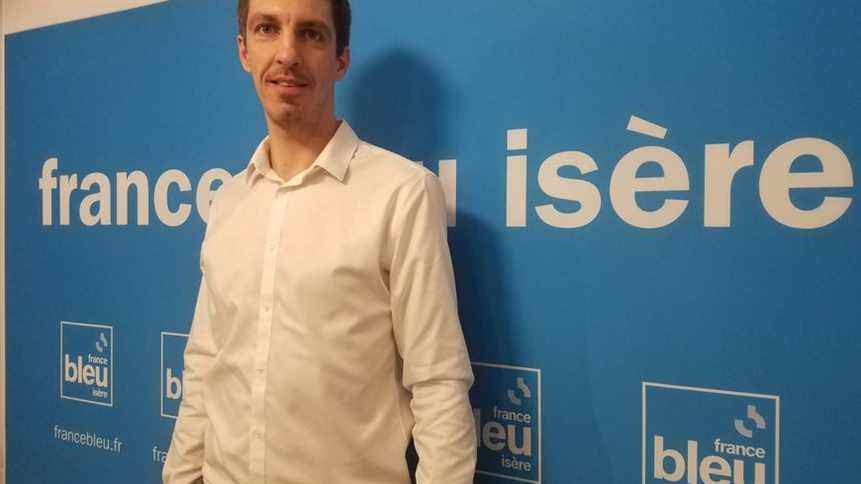The network of second chance schools are taking stock this Tuesday, March 29. These schools, which welcome unemployed and unskilled young people, must take care of an increasingly complex public. And the Isère school is no exception.
Do you know the 2nd chance school? A school for young people aged 16 to 25, unemployed, without qualifications, to support them towards a project. These schools take stock this Tuesday, March 29. The opportunity to talk about education 12 days before the presidential election, while France Bleu is currently launching its Challenge Jeunes d’Avenir. Corentin Ami, the director of the 2nd chance school in Isère is our guest.
France Bleu Isère: First tell us about the school, there are three sites in Isère. How many young people do you support?
Corentin Ami: Today, we support 275 young people, aged 16 to 25, throughout the territory. They are taken care of at our three sites at the departmental level, those of Grenoble, Vienne and Voiron.
Young people who need an internship, training. I imagine that during the epidemic, it was complicated… Are things better today?
Yes, indeed, the dynamics of internships slowed down considerably during the Covid epidemic period. Today, we feel that companies are more open and we thank them for that. However, the dynamic takes time to recover. And therefore, we must continue the movement of integration of young people in companies to enable them to integrate sustainably.
What sectors are needed?
Today we have many many needs. Our young people have, for some of them, rather well-established professional projects and are attracted by professions such as personal assistance, hotel and catering, sales, logistics, transport. But the majority of them do not have a professional project. And so, when they arrive at school, the objective is to give them the opportunity to do different internships in different sectors of activity to refine their professional project, develop skills and at the end find a sector that suits them. please.
How many internship or job offers are you missing today?
It’s difficult to quantify since today, at the second chance school, a young person does about a third of his course in internship, that is to say a two-week internship every five weeks. So with more than 100 young people in our centres, we actually need a hundred internships every five weeks. To give you an idea of the volume and the rotation that we need to allow them to discover the professional environment and to reduce the impressions they may have on this sometimes somewhat remote environment.
How do you get into the 2nd chance school? Who is it open to?
Today, the school gives a chance to young people aged 16 to 25, in Isère, who have left the school system and who are not employed. These are rather poorly qualified young people, below the baccalaureate level. They can present themselves spontaneously on one of our three sites to be able to integrate the school, or else be prescribed by a public employment service, a local mission or Pôle emploi.
The Second Chance School of Isère is 13 years old, it was created in 2009. What has been the evolution since this creation?
In 2009, the Grenoble site was created. Two years later, the Voiron and Vienne sites were created. Today, we are really on this departmental structure which is specific to the second chance school in Isère, compared to our counterparts in Auvergne-Rhône-Alpes.
We want to maintain this territorial presence because it allows us to be close to the public of the various housing centers in the department. Our wish today is to continue our territorial anchorage. Why not open new centers? In order to be able, once again, to reach audiences far from professional integration.
And these audiences, precisely, these young people, how have you seen them evolve over these 13 years of activity?
Today, we realize in our centers that the typology of the public is changing significantly, with increasingly important peripheral issues: housing, health, mobility, budget management, disability also sometimes. All of this is something more and more important in our schools. We have to adapt. We make sure to be able to increase our skills on these subjects and to welcome them in the best possible way. But for all that, this theme most of the time complicates the accompaniments.
Do you have the means to act as you wish?
Today, what we would like is for the path of a young person to be reassessed, in particular to deal with this new problem, we would like our financial partners – the State and the region – to be able to increase the funding they give us. Even if today, the support is of quality.
Is this a request you have for the next five-year term, to have a little more means?
Absolutely. The national network of 2nd chance schools has several requests. On the one hand, to open the schools to new audiences: young people up to 29 years old, those with disabilities, baccalaureate holders in a fragile situation… The other request is to increase the price of the course of a young person with funders to give us enhanced support resources and finally establish the skills-based approach which is one of our specificities, which allows us to lead young people towards more diversified professional paths.
